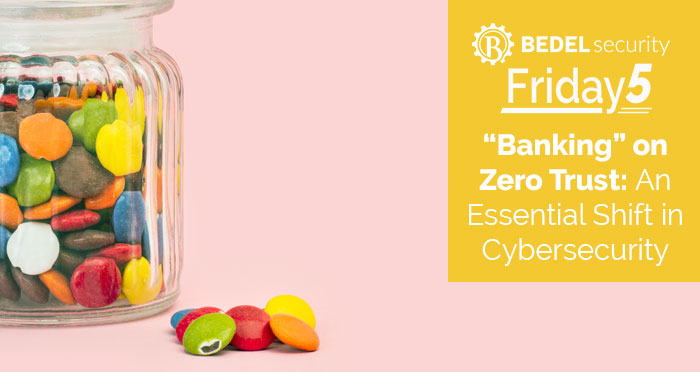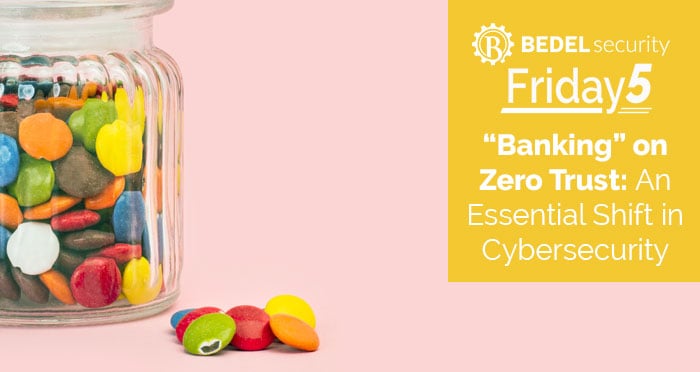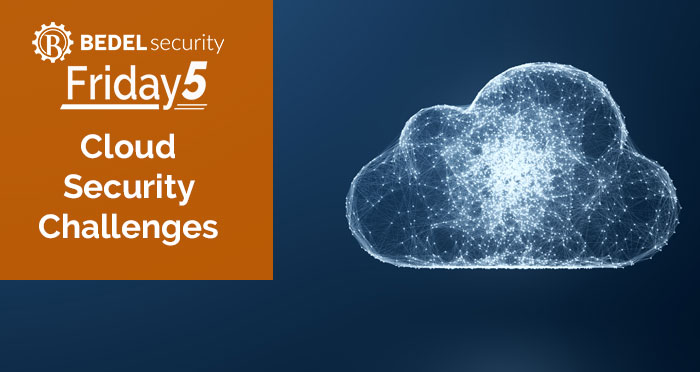Is Your M365 Conditional Access Unconditional?
As attackers are finding new ways to get around multifactor authentication in Microsoft 365, conditional access is becoming more important....


Ever heard Rick Howard's analogy of networks being like M&M candies? Imagine a hard exterior shell but with a soft, less secure core. Traditional network security has been all about hardening the exterior, keeping the bad guys out. But, once they're in, it's a cyber picnic in that soft middle. Now, envision a security model where every single interaction must be verified, no exceptions. Welcome to the world of Zero Trust.
As NIST neatly puts it, Zero Trust isn’t about trusting less, it's about verifying more. It's like turning our M&M into a jawbreaker—hardened through and through. Intriguing, right? Let’s unpeel this a bit further and explore what Zero Trust really means.
Here's the crux of the Zero Trust concept: "Never trust, always verify." In our digital homes - our networks - everyone and everything is suspect, even those already inside. Each request is treated as a potential threat, and verification is the new name of the game.
Now, let's take it up a notch with some wisdom from Rick Howard's book, "Cybersecurity First Principals." He advises us to switch gears and assume our networks are already compromised. A bit scary, right? But it changes our focus to reducing the probability of material impact if this turns out to be true. It's not just about barring the door; it's about preparing for when the intruders are already inside.
Zero Trust challenges the old assumption that everything inside a network can be trusted. Instead, it pushes for continuous verification for everyone and everything trying to access resources on the network. It's akin to having security checks at every door in your building, not just the entrance. Suddenly our networks don’t seem as soft on the inside, right?
Banks are like honey pots to cybercriminals - after all, that's where the money is! Every day, banking institutions face numerous threats, from phishing attempts to sophisticated cyber-attacks. In such an environment, the traditional 'trust but verify' model feels like a flimsy shield, doesn't it?
Now picture Zero Trust as the upgrade to this shield—a suit of armor, if you will. It provides enhanced protection by validating every action, every request, every moment. It's like having a personal bodyguard scrutinizing everyone at your party, not just the newcomers.
Zero Trust isn’t just about protecting your bank from external threats; it’s about being prepared if those threats bypass your exterior defenses. With the "assume breach" mentality, you're already a step ahead, preparing for what happens when (not if) those threats get through.
Zero Trust may sound like a lofty concept, but there are some tactics you're probably already utilizing to support this strategy like:
Think of it like a strategic chess game. You need to plan your moves, identify your assets, know your opponents (threats), and most importantly, you need to know your own position. That's why the first step in implementing Zero Trust is understanding your organization's current security stance. Take a comprehensive inventory of your digital assets (Asset Management), understand your network architecture, and identify potential vulnerabilities (Vulnerability Management).
Next, prioritize your actions with a Risk Assessment. Not all assets are created equal. Some data and systems are more critical than others. Protect these critical assets first. That’s like safeguarding your King and Queen in that chess game!
Implementing Zero Trust is not a one-time project but a journey. It's a shift in mindset and requires an ongoing commitment of time and resources. But remember, the reward is a strengthened security posture and better protection against increasingly sophisticated threats.
Finally, never stop learning and adjusting your strategy. The world of Cybersecurity is evolving, and so are the threats. Your Zero Trust strategy must evolve too. Stay informed, stay vigilant, and stay secure. If you need help adopting a Zero Trust mindset for your institution, feel free to reach out any time to support@bedelsecurity.com.

As attackers are finding new ways to get around multifactor authentication in Microsoft 365, conditional access is becoming more important....

As financial institutions increasingly embrace the benefits of cloud computing, the importance of cloud security cannot be understated. While the...

In today's digital landscape, securing user authentication is more critical than ever. Recently, I explored the benefits of using Yubikeys and...